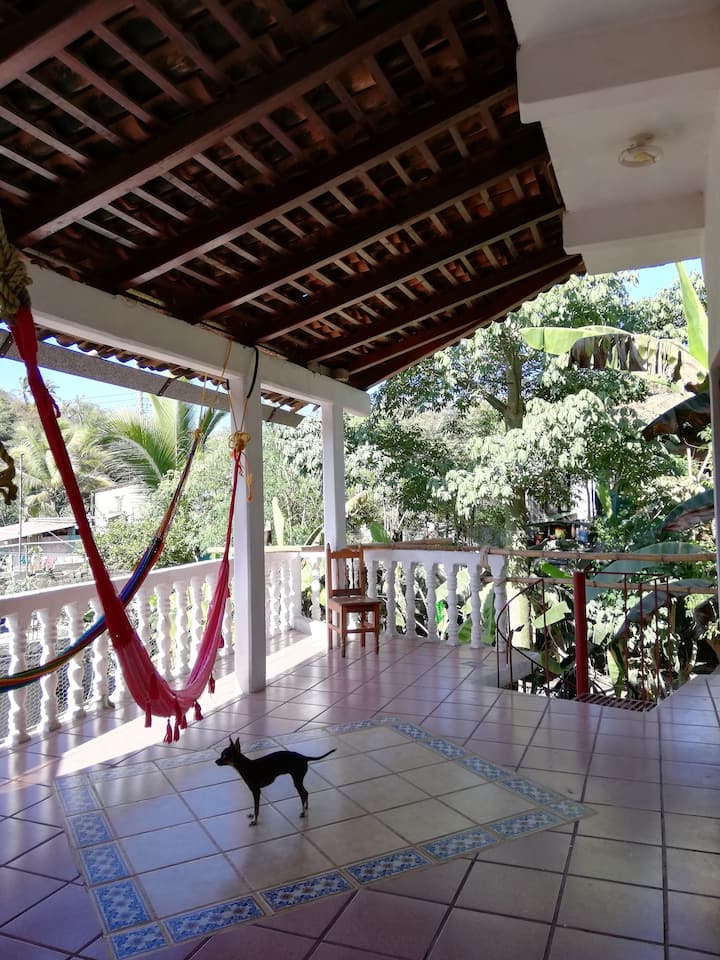AMLO Hasn’t Done Enough to Address Mexico’s Gender-Based Violence Epidemic
Violence against women in Mexico, including femicides, has skyrocketed in recent years. And despite presiding over a gender-equal government and decrying machismo, AMLO has done little to address the growing epidemic.
On a recent morning in the coastal village of Zipolite in Mexico’s Oaxaca State, I went for a jog on the beach with a fourteen-year-old — we’ll call her Alejandra — from Tapachula on the Mexican-Guatemalan border. Alejandra had come to Zipolite with her mother to work in a restaurant for the couple of months that constitute the high season here, and told me matter-of-factly that her older sister had traditionally accompanied her mom — but that her sister had recently been murdered by a jealous militar. Recounting how the man had beaten and strangled her sister in a Tapachula motel room, Alejandra went on to describe her mother’s barrio-permeating screams upon hearing the news. Her sister left behind a four-year-old son.
The killer, Alejandra told me, was ultimately tried and incarcerated — a relatively rare occurrence in a country where both femicides and impunity abound. An average of ten women are murdered each day in Mexico, with femicides skyrocketing 137 percent between 2015 and 2020. Given the underreporting of such crimes and the tendency to categorize femicides as ordinary homicides, the actual numbers are likely much higher. Last year, Mexico’s El Universal newspaper reported that between 2015 and 2018, a mere 7 percent of crimes against women had been investigated, and that only 5 to 7 percent of alleged criminals in these cases appeared before a judge. Nearly 80 percent of Mexican women report feeling unsafe.
The initial spike in femicides took place on the watch of right-wing president Enrique Peña Nieto, who governed Mexico from 2012 until 2018. However, the trend has continued under the left-wing rule of Andrés Manuel López Obrador (AMLO), who despite presiding over a gender-equal government and decrying machismo, has reacted to femicides and violence against women in a manner that is at best odd and at worst horrifying.
In February, shortly after twenty-five-year-old Ingrid Escamilla was stabbed, skinned, and disemboweled in her Mexico City apartment, AMLO expressed resentment during a press conference that the femicide issue should distract from the raffle of Mexico’s presidential airplane.
The same week, also in Mexico City, seven-year-old Fátima Aldrighett was abducted, tortured, sexually abused, and murdered. The moral of the story, according to AMLO, was that the neoliberalism of previous governments had triggered societal decay and a loss of values — and that growing feminist protests in Mexico were part of a right-wing plot against his administration.
There’s no denying that neoliberalism fosters violence and subordinates women. But telling aggrieved Mexican women that they can’t think for themselves and are simply victims of right-wing manipulation is no way to go about dismantling the patriarchy. (Nor, it bears mentioning, is AMLO’s anti-neoliberal rhetoric easily reconcilable with all of his actions, which have included celebrating with Donald Trump the new iteration of the North American Free Trade Agreement, which destroyed countless Mexican lives and was linked to a surge in lethal violence against women.) Similarly, AMLO’s condescending comments about minor acts of vandalism committed by feminist protesters implies that he’s more concerned about the destruction of private property than the destruction of women’s bodies.
The coronavirus pandemic and stay-at-home measures have further exacerbated the problem. In July, UN Women in Mexico calculated a 60 percent increase in domestic violence against women based on phone calls placed to the organization’s help-lines. In the first four months of 2020, 987 women and girls were murdered, including 267 in April, the deadliest month yet on record.
Here, too, AMLO hasn’t been helpful — arguing that 90 percent of domestic violence calls made to emergency hotlines are false and releasing a public service video with advice on how to avoid violence in the home, such as taking a deep breath and counting to ten.
In an April article for the Indypendent, Mexico City–based director of the Americas Program, Laura Carlsen, noted that, while the AMLO government was defunding women’s shelters and declining to offer much-needed compensation for caregiving work during the pandemic — the brunt of which falls to women — some $190 million in additional funds had been allotted to the Mexican armed forces to “confront the virus.”
The military is regularly accused of “human rights violations, including rape and sexual violence,” Carlsen emphasized. It doesn’t take much imagination, then, to ponder the potential implications for Mexico’s female population of the ever-expanding role of such a comprehensively “patriarchal institution.”
Which brings us back to my jogging partner Alejandra, whose sister was murdered in Tapachula by the jealous militar. Alejandra’s absentee father, himself a retired Marine, had blamed Alejandra’s mother for the murder. When he then came down with coronavirus and moved back into the family house to be cared for — thereby infecting Alejandra, her nephew, and her mom — domestic discord had reached such levels that Alejandra had jumped at the chance to work in Zipolite, she told me. Now, as the pandemic rages and compounds Mexico’s femicide epidemic, there’s really no time to stop and count to ten.















